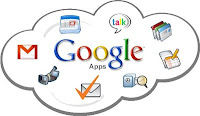Assistive Technologies are "assistive, adaptive and rehabilitative devices for people with disabilities." They are used inside and outside of the classroom to help people with special needs accomplish tasks. Assistive technologies may be as
low tech as eyeglasses, curb cuts, large print, white canes or wheel chairs. They might also involve
sophisticated technology which includes speech recognition software, hearing aids, text telephones, alternative keyboards, and Braille displays.
There is a whole community of parents and professionals dedicated to
Assistive Technology. Spend some time reading and reviewing their discussions.
Universal Design for Learning is an educational strategy designed to address the needs of ALL learning differences. It is based upon the way that the brain works. It involves providing multiple means of
representation,
expression and
engagement. This means that there are:
- multiple ways to acquire information (e.g., reading, watching, listening, or doing.)
- multiple ways to engage in the learning process (e.g., creating projects, exploring environments, or collaborating with others.)
- multiple ways to demonstrate knowledge (e.g., creating videos, writing papers, and solving problems.)
This 5-minute video provides an easy-to-understand introduction to
Universal Design for Learning:
There are many aspects of
Assistive Technologies and
Universal Design for Learning that educators MUST consider
. As teachers, we are legally and morally obligated to provide our students with learning opportunities that best accommodate their needs.
 IDEA (The Individual with Disabilities Education Act) (article)
IDEA (The Individual with Disabilities Education Act) (article)
Parent's introduction to the Individual with Disabilities Education Act.
Differentiated Instruction and the Implications for UDL Implementation (article)
Explains the basis of Differentiated Instruction and how using Universal Design for Learning can personalize the learning experience for students.
From voice-activated software to customized laptops, technology can change the way disabled students communicate, learn, and play. Consider how you would use these as a teacher (and as a student.)
iPads in the Special Education Classroom
This is a blog run by a special education educator. This page is a treasure-trove of resources. It explains a variety of benefits of using tablets (yes, I know that it is iPad-based, but think "tablet") as computing tools for students. These are from the teacher's, student's and education's points of view. Explore the many resources in the right column as well.
Glenda Watson Hyatt's Blog
Ms. Hyatt has a thriving blog online. She has written a book and consults with educators on using technology in teaching. She also has athetoid cerebral palsy. This means that she has problems with muscular control. Glenda explores the many assistive tech apps that can be used to assist challenged learners like herself. Watch her video,
The Left-Thumb Blogger, to see how she uses assistive technologies to overcome her challenges. Imagine if you can offer this in your classes to your students.
Aimee Mullins: Running on High-Tech Legs (10-minutes)
In this TED archive video from 1998, paralympic sprinter Aimee Mullins talks about her record-setting career as a runner, and about the amazing carbon-fiber prosthetic legs (then a prototype) that helped her cross the finish line. (This a video of a presentation from TED Talks. We STRONGLY suggest that you visit TED.org to hear some of the greatest minds on the planet present their ideas and visions.)
photos: flickr.com/benson, YouTube.com and ted.com









